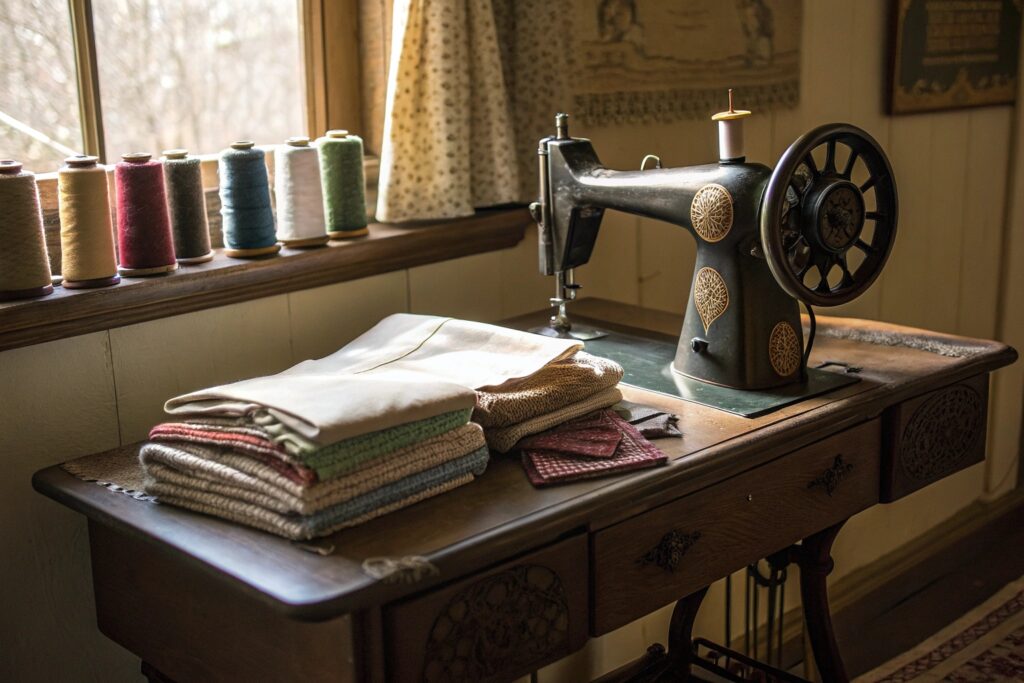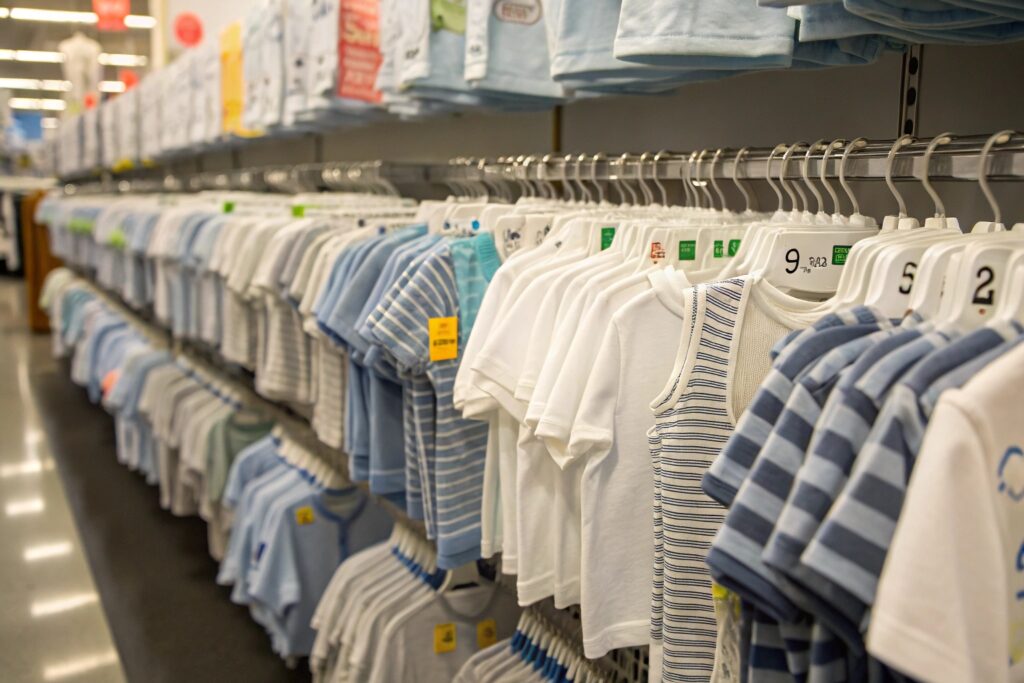Once a common household skill, sewing your own clothes is now a rare hobby. With fast fashion on every corner, why even bother?
People no longer sew their own clothes due to time constraints, lack of skills, and easy access to cheap ready-made garments. The modern lifestyle favors convenience over customization.
DIY clothing isn’t gone—it’s just become niche, shaped more by passion than necessity.
Decline of Home Sewing in the Fast Fashion Era
There was a time when every home had a sewing machine, and clothes were made with care. Now, most households rely entirely on retail.
Fast fashion has made home sewing less appealing by offering trendy clothes at extremely low prices, eliminating the financial need to sew garments at home.

How has fast fashion made homemade clothing less practical?
Global fast fashion chains like Zara, H&M, and Shein release new styles weekly—sometimes even daily. These clothes are cheap, accessible, and “good enough” for short-term wear. Compared to that, sewing your own clothing often takes:
- Several hours of labor
- Fabric and supply sourcing
- Skill in cutting, fitting, and assembling
- Access to and maintenance of a sewing machine
This level of effort makes homemade clothing less attractive to the average consumer, especially when they can buy a complete outfit for under $20.
In our experience at Fumao Clothing, fast fashion's speed and volume have completely restructured sourcing models. Even small brand buyers now look for weekly style refreshes, pushing handmade or slow-crafted products into a much smaller market.
What societal changes contributed to the drop in home sewing?
Over the past 40 years, several social shifts changed sewing from a household norm to a rare skill:
- Women’s labor participation increased: Less time for domestic activities like sewing.
- Education de-emphasized textile arts: Many schools dropped sewing from curriculums.
- Mass production became normalized: Fewer people see homemade clothing as “better.”
- Social media and branding rose: Store-bought styles signal trend alignment.
As clothing prices dropped, making your own clothes no longer saved money. Today, sewing is more about self-expression, sustainability, or artistry—not necessity.
Cost vs Time: Why DIY Clothing Is Rare Today
DIY might sound cheap, but once you count hours, it rarely is. And for most people, sewing just isn’t time-efficient.
Making your own clothes requires significant time, equipment, and material costs—making it less appealing than purchasing affordable ready-to-wear garments.

How do time demands discourage people from making their own garments?
A simple T-shirt might take 3–5 hours from design to finish, depending on skill level. A dress could take 10+ hours, especially if pattern adjustments, fittings, or detailing are involved.
Compare that to shopping:
- Open a browser
- Click “Add to Cart”
- Receive it in 48 hours
Modern consumers value time more than ever. Between work, family, and screen time, sewing competes with every other activity in a crowded schedule.
One of our American clients—a small apparel brand—once tried teaching followers to sew their own capsule wardrobe. While engagement was high, conversion was low. Most people liked watching—but didn’t want to try it themselves.
Is sewing your own clothes actually more affordable?
Here’s a breakdown:
| Item | DIY Sewing Cost | Fast Fashion Equivalent |
|---|---|---|
| Cotton dress fabric | $15–20 | $9–12 |
| Thread, buttons, tools | $5–8 | Included |
| Time (5 hrs @ $15/hr) | $75 | — |
| Total | $95–103 | $10–15 |
Even if you remove time, the material cost alone can be higher than buying off-the-rack. Only when prioritizing ethics, fit, or style control does sewing become worthwhile for the average person.
At Fumao, we see this logic reversed only in niche markets—cosplay, vintage recreations, or eco-conscious slow fashion circles.
How Ready-to-Wear Changed Consumer Habits
The retail industry made a promise: you don’t need to sew—we’ve done it for you. Over time, that changed how people shop and think about clothes.
Ready-to-wear fashion reshaped consumer behavior by prioritizing convenience, reducing personalization, and normalizing mass-fit garments over custom tailoring.

How did mass production remove the need for personal tailoring?
Before the 20th century, most clothing was custom-sewn. Then came the industrial revolution, factory lines, and standard size charts.
Ready-to-wear changed the rules:
- Garments were pre-made in standard sizes
- Tailoring was optional, not required
- Shops became the new seamstress
With low prices and large inventories, stores created a habit loop: browse, try, buy. Few people looked back at their sewing machines.
Today, most people don’t know what “fit customization” means unless they’re buying a wedding dress or formal suit. Even then, they expect a tailor to do it—not themselves.
What retail habits replaced traditional garment-making behaviors?
Here’s what the shift looks like:
| Past Habit | Modern Equivalent |
|---|---|
| Mending clothes | Buying replacements |
| Seasonal home projects | Online shopping hauls |
| Family-made outfits | Fast fashion purchases |
| Pattern collection | Pinterest mood boards |
Consumers now treat clothing like a subscription. New looks each season. Low cost. Quick turnover.
This model doesn’t support the patience or investment needed for sewing. At Fumao, our bulk buyers plan drops 3–6 months in advance—but even they’re racing to keep up with trend turnover that favors pre-made, low-commitment designs.
Skills Gap and Tools Limiting Home Garment Making
Even if you want to sew, where do you start? Many people don’t know how to use a sewing machine, let alone draft a pattern.
Home clothing creation is limited by lack of sewing education, fewer affordable tools, and declining interest in textile craftsmanship. Most people simply aren’t trained to make their own clothes.

Why is the ability to sew no longer a common life skill?
In past generations, sewing was passed down. It was taught in schools, practiced at home, and considered essential. But over the last few decades:
- Home economics classes were cut
- Workforce participation increased
- Digital skills replaced manual ones
Now, most people can code or design a Canva post—but few can thread a bobbin. Without a strong knowledge base, sewing feels intimidating and inaccessible.
Some modern parents buy sewing kits for kids, but these are often treated as crafts—not skills. That means even the next generation may lack basic garment construction knowledge.
What equipment barriers discourage potential home sewers?
Sewing isn’t like baking—you can’t just start with a pan and a spoon. You need:
- A machine (good ones cost $200+)
- Scissors, needles, threads, and patterns
- An iron and space to cut
- Time and patience to make mistakes
Even seasoned sewers need room and quiet time, both of which are scarce in modern homes.
Also, machine maintenance and upgrades aren’t simple. Unlike the tech world, sewing tool innovation has stagnated. Most machines still rely on manual adjustments and physical troubleshooting.
At Fumao, we constantly hear from startup designers that sampling is hard because no one near them knows how to sew, alter, or prototype garments. That’s why we’ve added sample development services for new brands who lack local skills or tools.
Conclusion
People don’t sew their own clothes anymore because life changed. Fast fashion, time limits, and skill loss pushed sewing into a hobby—not a habit. But for those who still do it, it’s a creative act of slow resistance.










